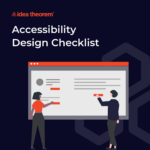Development & Engineering
AI Agent Software Development: Cost, Features & Process Explained
30 APR 2025
7 mins read


Artificial Intelligence (AI) is changing the way businesses work. One exciting part of AI is AI agents—smart software programs that can do tasks without human help. These agents can be used in customer service, healthcare, finance, and more. If you’re looking to create an AI agent for your business, understanding the cost, features, and development process is important. This guide will explain everything you need to know.
What is an AI Agent?
An AI agent is a computer program that uses AI to do tasks by itself. These agents can range from simple programs that follow basic rules to more complex systems that learn from experience. AI agents are used in many industries to help businesses improve their services and save time.
AI Agent Development Cost
The cost of building an AI agent can vary a lot, depending on how complex the agent is and what it needs to do. Here’s an idea of what it might cost:
1. Simple AI Agents
- Cost: $5,000 – $50,000
- What it does: Simple tasks, like answering questions or sending reminders. These agents follow clear rules to get things done.
- Best for: Small businesses or startups with a limited budget.
2. Medium-Level AI Agents
- Cost: $50,000 – $150,000
- What it does: More complex tasks, like understanding and responding to human language or detecting fraud. These agents use AI to learn and improve over time.
- Best for: Medium-sized businesses that need smarter automation.
3. Advanced AI Agents
- Cost: $150,000 – $500,000+
- What it does: High-level tasks, like self-driving cars or diagnosing diseases. These agents use deep learning and make decisions based on large amounts of data.
- Best for: Large companies or organizations with big budgets.
Factors That Affect the Cost:
- Task Complexity: More complex tasks cost more to build.
- Data Needs: AI agents need a lot of data to learn from, and collecting that data can be expensive.
- System Integration: If the AI agent needs to work with other systems, it may cost more.
- Maintenance: Ongoing support and updates are important for the AI agent to keep working well.
Stats:
- A report by McKinsey found that AI can increase business productivity by up to 40% in some sectors.
- According to Gartner, 75% of organizations will use AI in at least one business function by 2025.
AI Agent Development Process
Creating an AI agent involves several steps. Here’s how the process works:
1. Requirement Analysis
- What happens: You figure out what tasks the AI agent will do and what you want it to achieve.
- Activities: Talk to the team, map out the process, and set goals.
2. Design & Architecture
- What happens: Plan the structure of the AI agent and how it will work.
- Activities: Design workflows, choose AI models, and decide on tools to use.
3. Data Collection & Preparation
- What happens: Gather and clean the data the AI will use to learn.
- Activities: Collect data, remove any mistakes, and label it properly.
4. Model Development & Training
- What happens: Build and train AI models using the prepared data.
- Activities: Pick algorithms, train the models, and test how well they perform.
5. Integration & Deployment
- What happens: Connect the AI agent to your existing systems and make it live.
- Activities: Build APIs, connect systems, and deploy the agent.
6. Testing & Validation
- What happens: Test the AI agent to make sure it works correctly.
- Activities: Run tests, check performance, and make sure it meets requirements.
7. Monitoring & Maintenance
- What happens: Keep an eye on how the AI agent is doing and make updates as needed.
- Activities: Track performance, retrain the AI, and fix any problems.
Key Features of AI Agent Software
AI agents come with several features that make them useful:
- Natural Language Processing (NLP): Lets the AI understand and respond to human language.
- Machine Learning (ML): Helps the AI learn from data and improve over time.
- Decision-Making: The AI can make decisions based on what it has learned.
- Integration Capabilities: It can work with other systems through APIs.
- User Interaction: AI agents can interact with users via chat, voice, or other methods.
- Analytics & Reporting: AI agents can track their performance and offer useful insights.
Choosing the Right AI Agent Development Approach
There are different ways to build an AI agent:
- Custom Development: This means building the AI from scratch. It’s flexible but can be more expensive.
- Open-Source Frameworks: Use tools like TensorFlow or PyTorch to speed up development and lower costs.
- AI-as-a-Service: Use ready-made AI tools from companies like AWS, Google, or Microsoft. This is cheaper and faster but less customizable.
Real-World Examples
Here are some examples of AI agents used in real businesses:
- Drift AI Chatbot: A bot that helps companies talk to website visitors and collect leads. It cost about $50,000 to develop.
- Cleo AI: A personal finance assistant that helps people with budgeting. It cost around $30,000 to $45,000 to create.
- Tesla Autopilot: The AI that powers self-driving cars. It cost more than $100 million to develop because it’s very complex.
Analogy: Building an AI Agent is Like Building a Custom Car
Creating an AI agent is a lot like building a custom car. You start with the design (what tasks the agent will perform), choose the parts (AI models and tools), and carefully assemble everything (training and testing). Just like building a car, the more advanced the features (like a self-driving car), the more it will cost. But in the end, you’ll have a powerful tool tailored to meet your needs, whether it’s speeding up processes or providing smarter services.
Trends in AI Agent Development
- Usage-Based Pricing: Instead of paying a flat fee, businesses are paying for the amount of AI they use. This is because AI systems can be expensive to run.
- More Enterprise Adoption: Big companies are using AI agents more to improve efficiency and reduce costs.
- Ethical AI: There is a bigger focus on making sure AI agents are fair, transparent, and ethical.
Conclusion
Building an AI agent can help your business save time, improve services, and reduce costs. The development cost and process depend on how complex the agent needs to be, but with careful planning, you can create an AI agent that works for your needs. Whether you’re a small business or a large enterprise, understanding the cost, features, and development process of AI agents will help you make the best decision for your company.
Frequently Asked Questions (FAQ)
Q1. How much does it cost to develop an AI agent?
Ans: The cost of developing an AI agent depends on its complexity. Simple AI agents may cost between $5,000 and $50,000, while more advanced agents can range from $150,000 to $500,000 or more.
Q2: What are the key features of AI agents?
Ans: AI agents come with features like natural language processing (NLP), machine learning (ML), decision-making capabilities, and integration with other systems. These features help the agent interact with users and perform tasks more effectively.
Q3: How long does it take to develop an AI agent?
Ans: The time it takes to develop an AI agent varies. A simple agent might take a few months to develop, while more advanced agents could take six months or longer.
Q4. Can small businesses afford AI agents?
Ans: Yes, small businesses can afford AI agents. They can start with simpler, less expensive AI agents to automate basic tasks. As their business grows, they can invest in more complex systems.
Q5. What are the benefits of AI agents for businesses?
Ans: AI agents can save time, reduce errors, improve customer experience, and increase productivity. By automating repetitive tasks, businesses can focus on more strategic goals.





